
Project “Implementation of the transition from ARIS to SILA Union at Gazpromtrans LLC”
Customer
Gazpromtrans LLC is a subsidiary of Gazprom PJSC, whose main task is to provide a full range of transport and forwarding services for products of Gazprom PJSC and other manufacturers of the Russian fuel and energy complex by rail.
Gazpromtrans LLC is one of the largest railway operators in Russia for the transportation of petroleum products and LPG, which manages more than 30 thousand cars and 900 km of railway tracks in operation.
Goals and tasks of the project
The main goals of the project were the import substitution of the ARIS business process modeling software product with SILA Union software and the visual adaptation of models during the transition.
The specialists of Gazprom LLC were faced with the task of choosing a solution that would satisfy the following requirements:
Preserving the possibility of a process approach to describing the company’s business processes; Maintaining the format and type of process descriptions approved by the company; Possibility of transferring data from ARIS to a new oneinformation system; Maintaining the functioning of the quality management system in the company; Availability of a full-fledged process modeling tool in BPMN 2.0 notation, incl. to automate company processes.
Project implementation
SILA Union software, Russian software for modeling, analysis and optimization of business processes, was chosen as the IT solution. SILA Union allows you to seamlessly migrate from foreign software products while maintaining all the methodology and tools of the previous system thanks to the built-in data import functionality.
The product was introduced in several stages:
1. Software implementation
Installing software on the server Software testing Software setup and user management Order on putting into commercial operation Entry into the register of approved software2. Education
Business process modeling training Administration training3. Software adaptation
Setting up a preset in terms of objects, connections, models, attributes Creating Databases Setting access rights4. Preparing the Database for Modeling
Drawing org. structures Development of a top-level business process model Approval of the top-level model in the company5. Testing loading models from ARIS
Uploading a model from ARIS Configuring objects and connections in SILA UNION Loading the model into the database6. Practical use
Modeling of company processes (providing vacations, selling scrap metal, maintaining a single directory of materials and materials in 1C) RegulationOutside the general work plan, employees of the Yamal branch of Gazpromtrans LLC were trained in the process approach and modeling in SILA Union, models of upper-level business processes of the Yaroslavl Branch were developed, and the knowledge base was transferred from ARIS.
Object models used
An example of visual adaptation of a business process model
Based on the results of testing the SILA Union software, it was determined that the functionality of the system allows us to fulfill the company’s requirements, transfer all necessary objects, and also make improvements and additions.
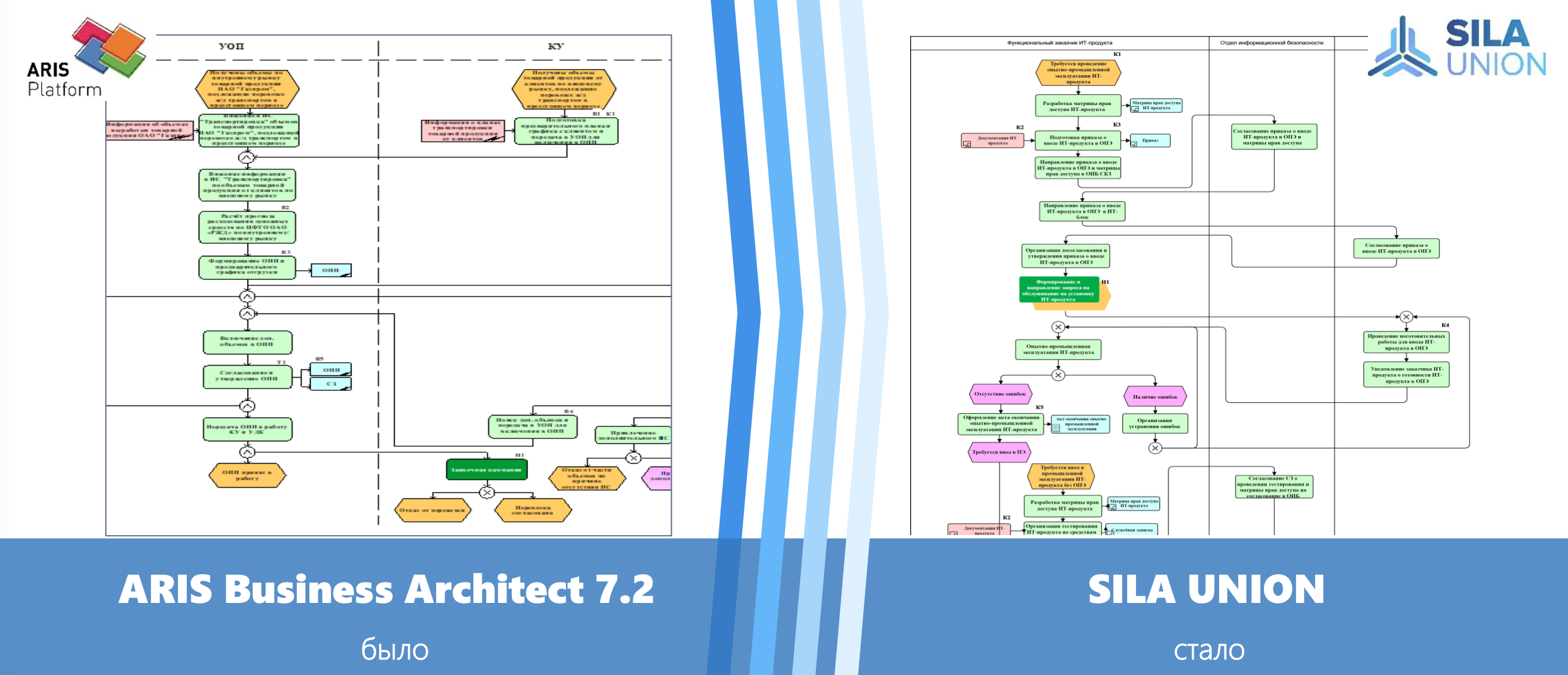
This diagram shows an example of an object in ARIS software and how it is visually represented in SILA Union software. The advantage of SILA Union is that any object can be reproduced with precision and with minimal programming skills. For example, at the customer’s request, change colors, visual presentation of objects, etc.
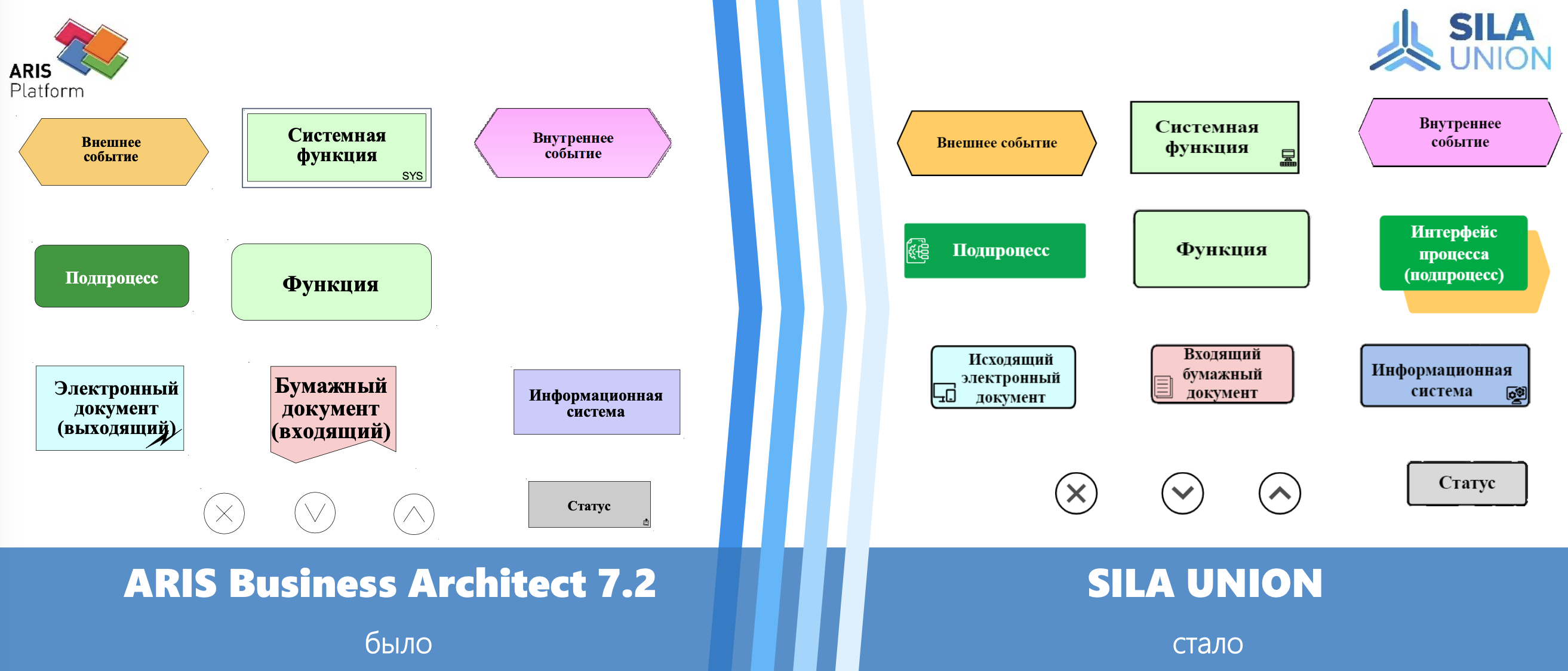
Visual adaptation of regulatory documents
Modeling objects in Gazpromtrans has some features: EPC notation is used to describe business processes, but performers are displayed as tracks. All internal actions are reflected on the model according to the principle of “reasonable sufficiency” - that is, only fundamentally important events, so as not to overload the diagram and represent the entire process.
Also another feature is the separation of additional requirements into separate objects. That is, so-called descriptive attributes were introduced into ARIS, which were tied to the function and reflected all the necessary requirements, for example, deadlines, regulatory documents, etc. Then all the information was uploaded into report templates.

With the introduction of SILA Union, it was decided to abandon the formation of unnecessary objects (attributes), since the new software made it possible to create instance attributes. That is, for each new object you can add an infinite number of attributes and instances. At the same time, it was possible to preserve the list of attributes of model objects - the requirements of regulatory documents.
Thus, in SILA Union all requirements for the description of regulatory objects were preserved, and at the same time working in the new system became much more convenient.
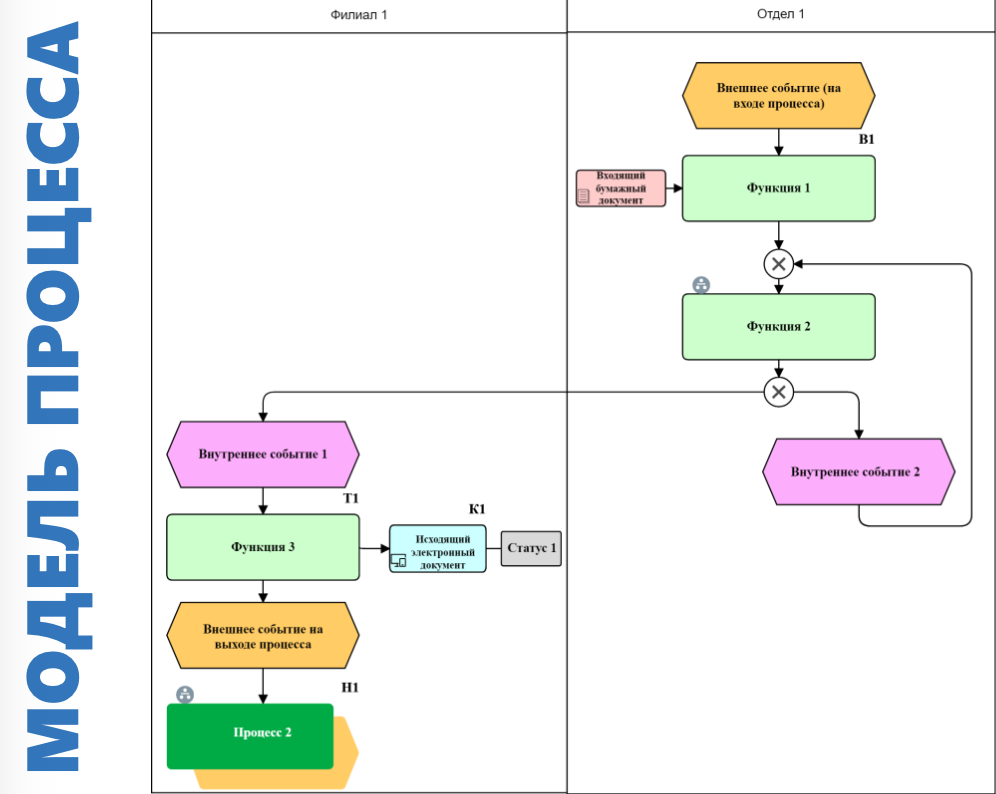
Models used in Gazpromtrans LLC
Currently, Gazpromtrans LLC uses 7 types of models:
Top-level process models (including VAD), where each process can be detailed into lower-level processes;
Event process chain (EPC) in the form of a classic model with the addition of tracks;
Organizational structure and status scheme for working with documents and further automation;
BPMN 2.0;
Regulatory documents - own knowledge base;
Role model - developed by Gazpromtrans.
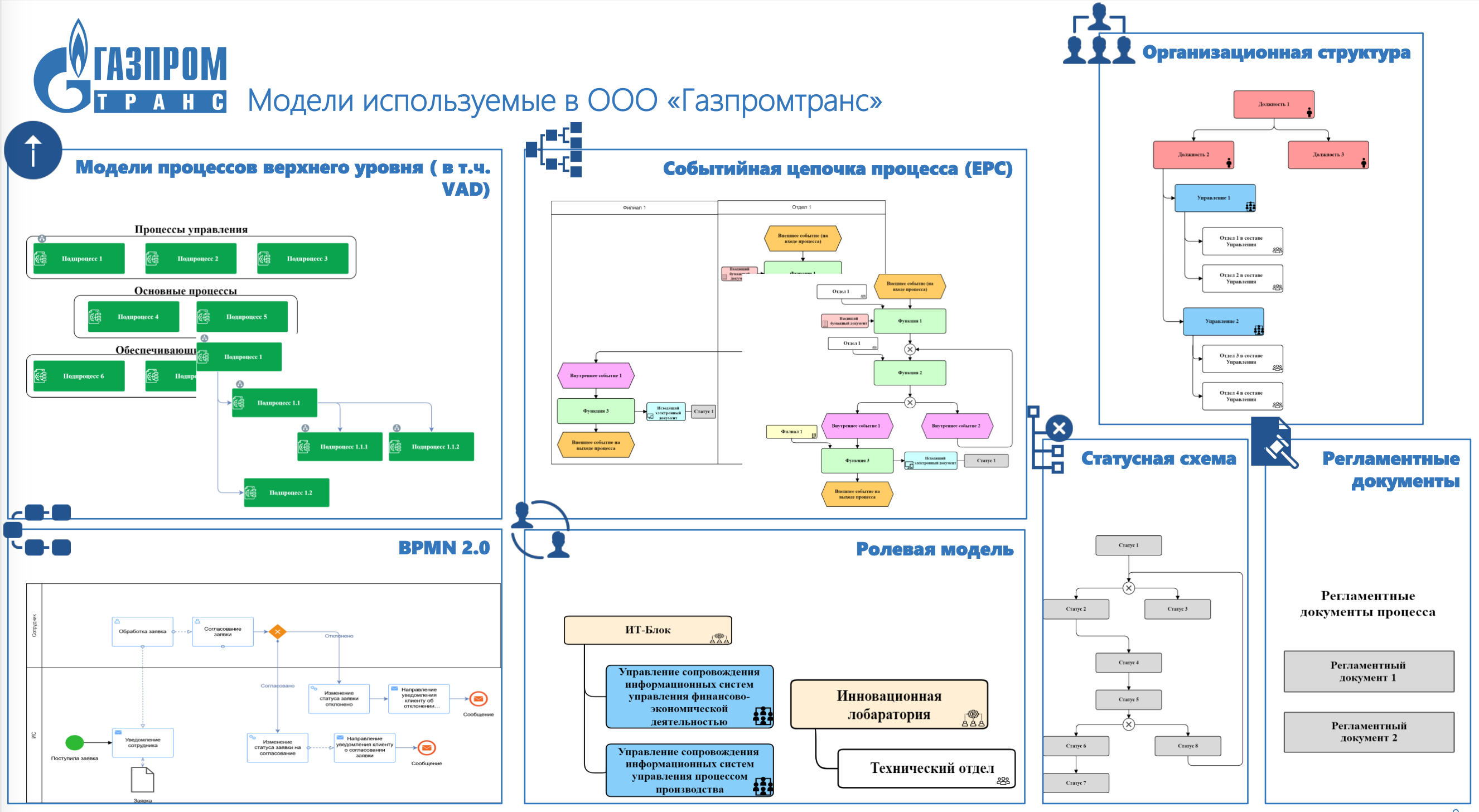
New Models: Role Model
A new role model has been developed at SILA Union. The need to create a new model was due to the fact that it was necessary to bring several responsible people from the organizational structure onto one track. The role model made it possible to combine certain positions or units, including all the necessary powers, to perform job or functional responsibilities.
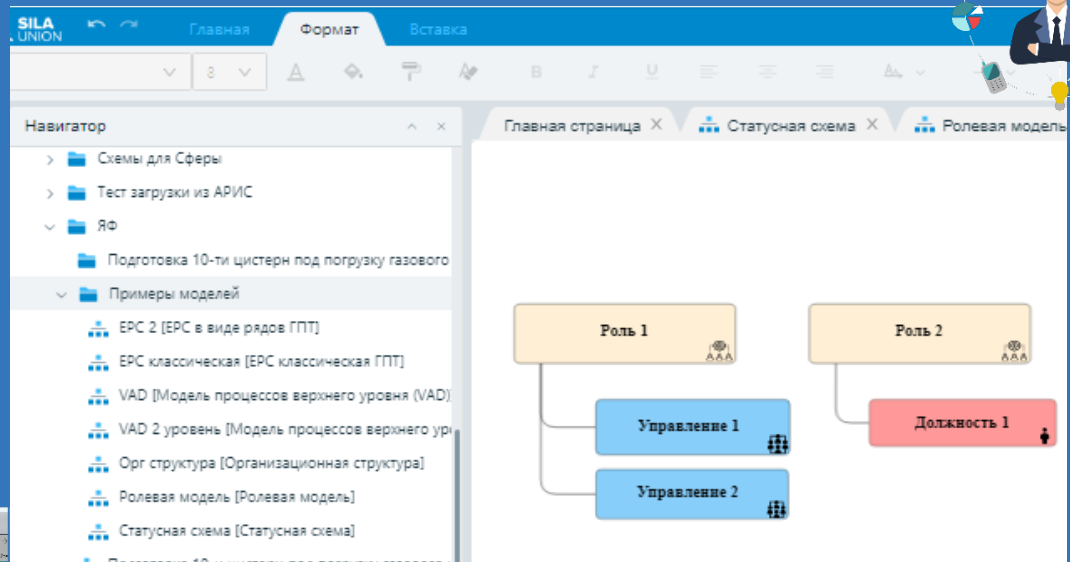
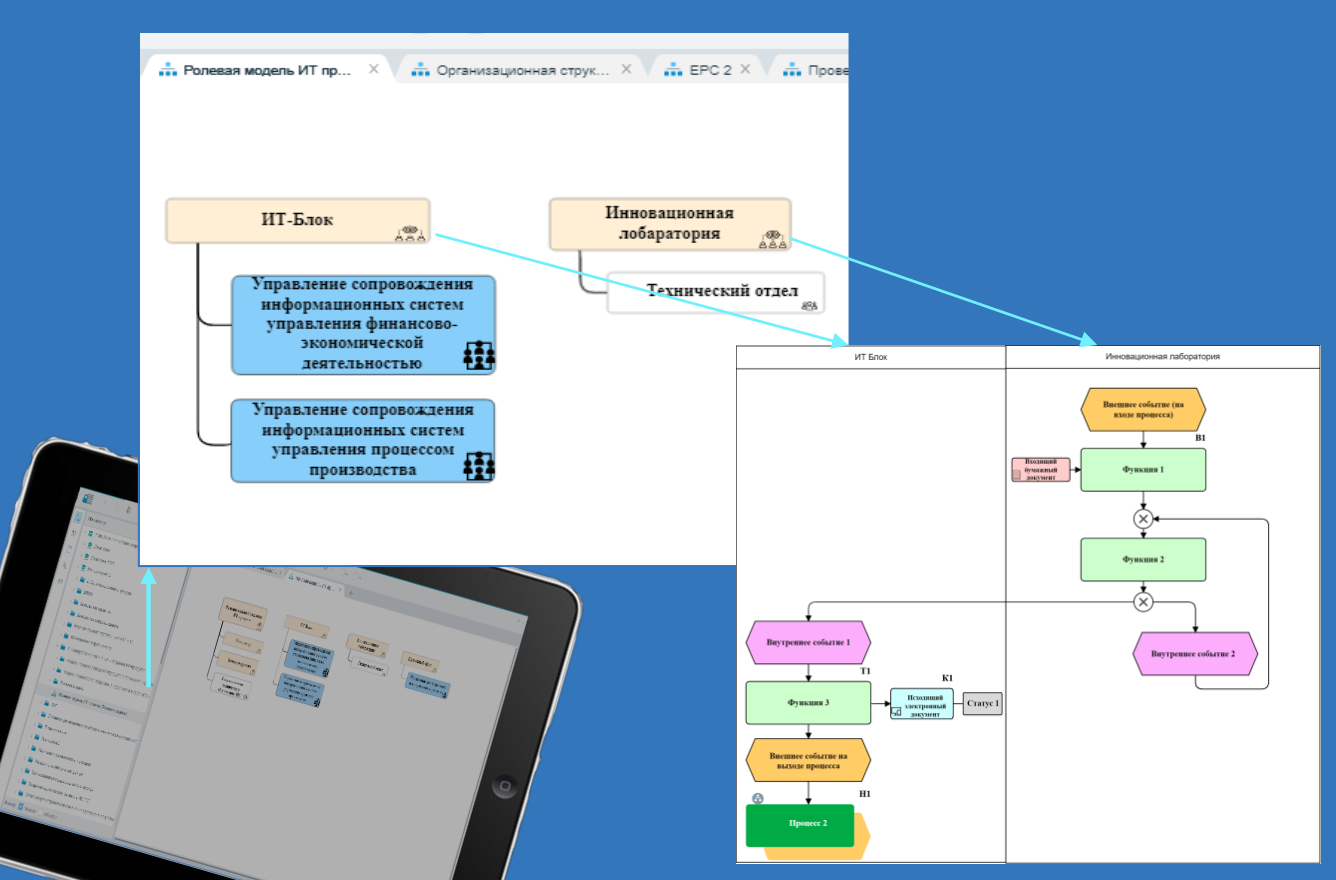
Knowledge base of regulatory documents
During the implementation of the project, SILA Union created a so-called knowledge base - a list of regulatory documents of the business process and a link. Any user with customized access can log into the system using their login, open and study the regulations, their contents and requirements.
Features of importing objects from ARIS to SILA Union
Transferring models from ARIS software to SILA Union has obvious advantages:
Objects and connections are transferred in full; Labor costs are reduced; It is possible to adjust the volume of data loading - users determine which objects, attributes, etc. need to be unloaded and which ones are not; The decomposition is preserved.There are also certain risks:
There is a risk of duplicating objects and transferring additional circuits, but in such situations SILA Union asks the user what actions to apply to such objects; Minor problems with fonts and sizes, which can be solved with simple manipulations in a short period of time; At the time of unloading, there was no loading in the context of tracks, but this risk is associated with the peculiarities of modeling in the company, which also turned out to be a solvable problem; Semi-manual transfer of regulation requirements from the Attribute object.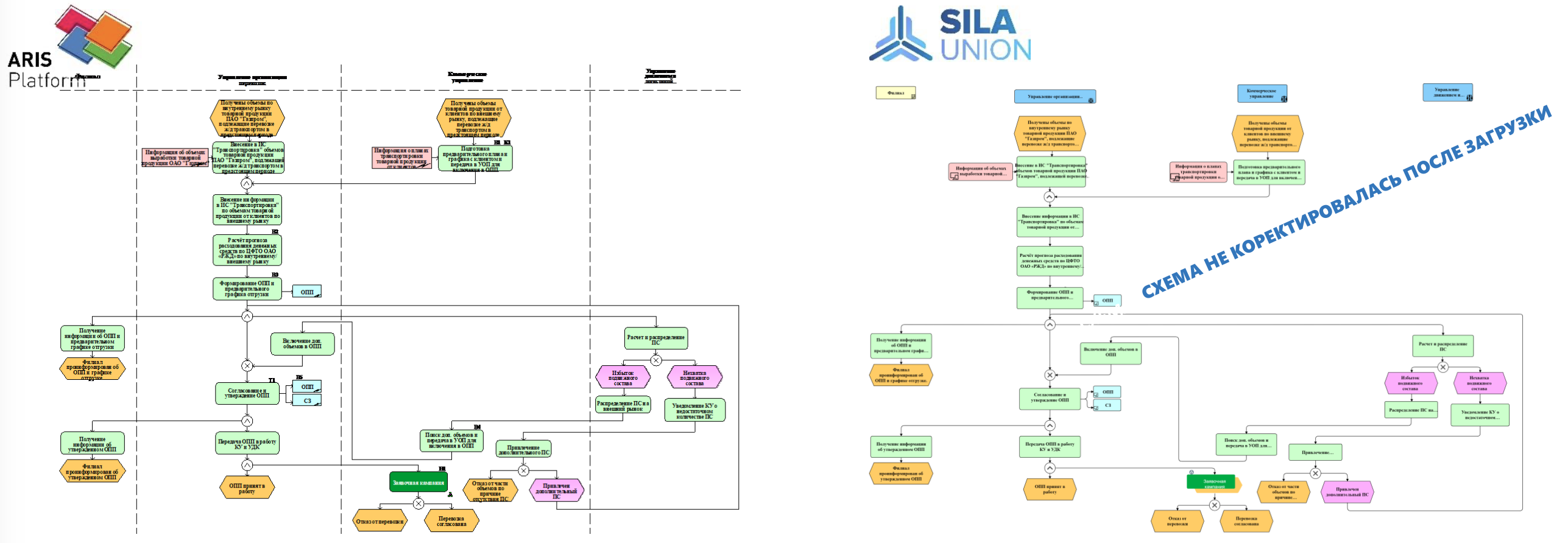
After adjustments, the diagram looks like this:
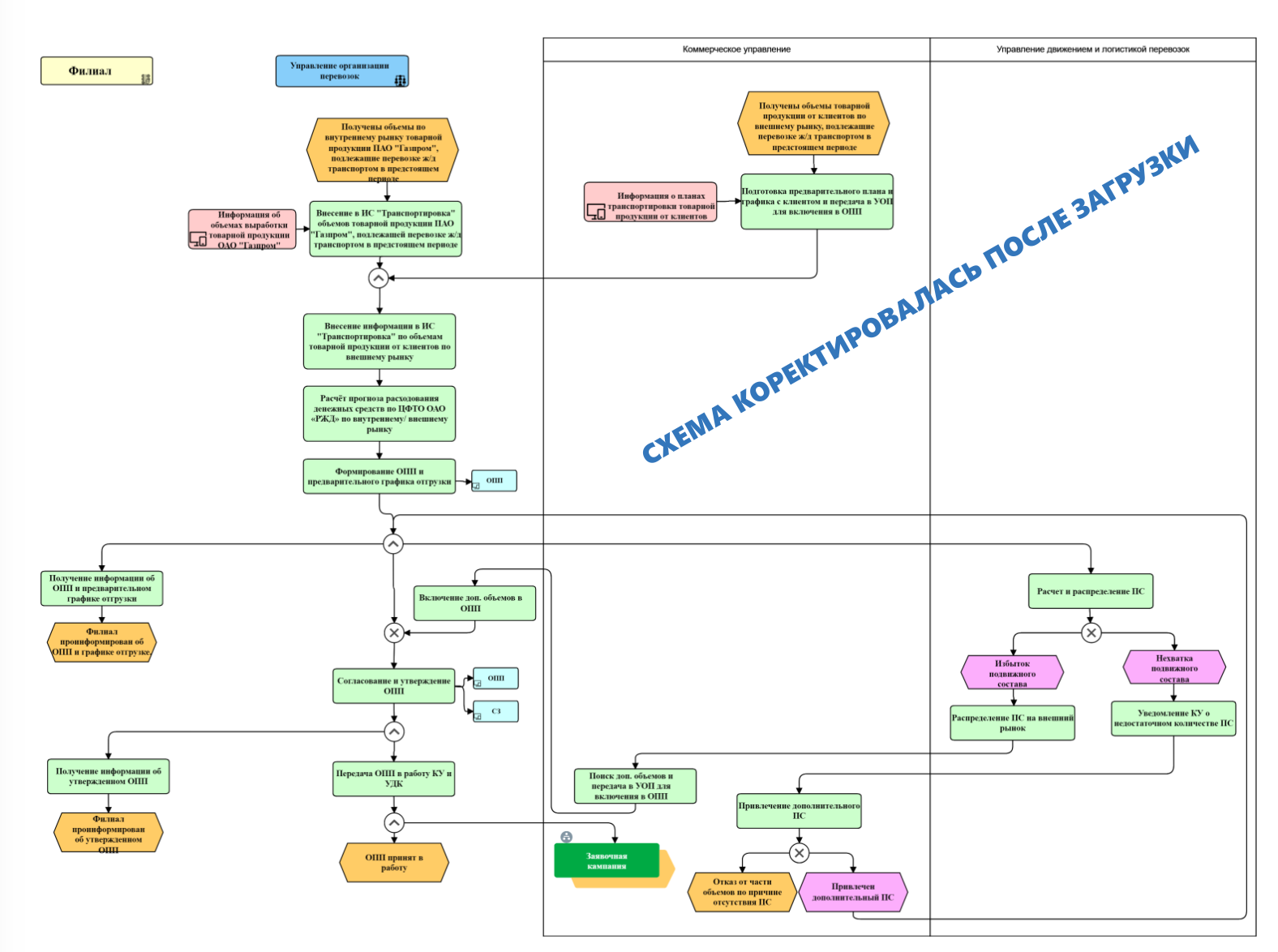
In total, it took 3 minutes to add 2 org tracks. units from org. structures and transfer of objects and 10 minutes to change the font, size of objects and alignment of connections.
Results
Thus, during the implementation of the project, the SILA Union software was successfully put into operation, preserving all data and developments with minimal effort. As a result, models and relationships were imported from ARIS into SILA Union in full, with the ability to adjust the volume of data downloads. Also implemented:
A top-level business process model was developed and approved; Several regulations for the company’s business processes using SILA Union have been developed and approved; A preset for business process modeling methodology has been developed by Gazpromtrans LLC; The regulation on business process modeling has been updated; We replicated the experience of modeling processes and describing regulatory documents for a branch of the company.
